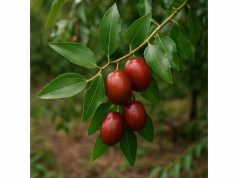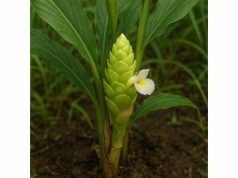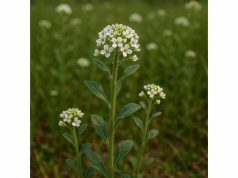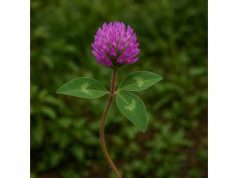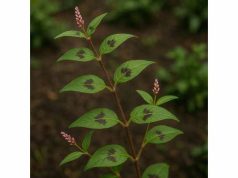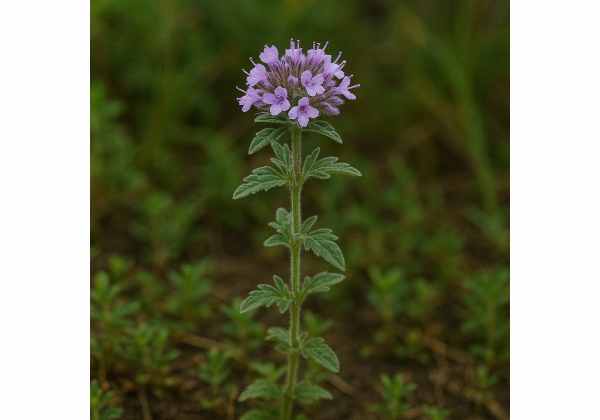
Ziziphora, a fragrant genus of aromatic flowering herbs in the mint family, boasts a long history of use in Mediterranean and Central Asian folk medicine. Rich in essential oils—principally pulegone, menthone, and thymol—alongside flavonoids, tannins, and rosmarinic acid, Ziziphora species deliver potent antioxidant, anti-inflammatory, and antimicrobial effects. Traditionally brewed as a tea for digestive ease, circulatory support, and respiratory comfort, this versatile herb also finds use in topical applications for wound care and skin health. Modern research continues to unveil its promise in metabolic regulation, neuroprotection, and immune modulation. In this comprehensive guide, we’ll explore Ziziphora’s botanical profile, phytochemical wealth, therapeutic virtues, practical applications, safety considerations, and cutting-edge scientific findings.
Table of Contents
- Botanical Synopsis and Habitat Range
- Chemical Composition and Principal Constituents
- Therapeutic Advantages and Core Qualities
- Applications and Precautionary Considerations
- Research Insights and Key Discoveries
- Frequently Asked Questions
Botanical Synopsis and Habitat Range
Ziziphora comprises about ten species of low-growing perennials and subshrubs in the Lamiaceae (mint) family, native to Mediterranean, Middle Eastern, and Central Asian regions. Plants typically form fragrant mats of slender, square stems reaching 10–30 cm tall, adorned with small, opposite, lanceolate to oblong leaves bearing a strong minty aroma. Clusters of tubular, bilabiate flowers—varying from violet-pink to pale lilac—bloom in summer, attracting pollinators such as bees and butterflies.
Common species include Ziziphora clinopodioides, Z. tenuior, and Z. taurica. These herbs flourish in rocky limestone soils, steppes, and dry hillsides at 200–2,000 m elevations. They favor full sun to light shade and well-drained substrates, tolerating drought due to deep, fibrous root systems. Wild stands contribute to soil stabilization and serve as nectar sources in xeric ecosystems.
Cultivation involves sowing seeds in spring or transplanting root divisions. Incorporate gritty, loamy soil with pH 7.0–8.0, and ensure moderate watering—enough to sustain growth without waterlogging. Pruning spent flower spikes encourages bushier habit and prolongs harvestable foliage. Harvest aerial parts just before full bloom when essential oil content peaks, then air-dry in shade to preserve volatile compounds.
Chemical Composition and Principal Constituents
Ziziphora’s medicinal reputation arises from a synergistic array of phytochemicals:
- Essential Oils (Pulegone, Menthone, Thymol)
- Pulegone: Major monoterpene (up to 40% of oil), with antimicrobial and spasmolytic actions.
- Menthone: Cooling monoterpene contributing to digestive comfort.
- Thymol: Phenolic monoterpene with strong antifungal and antibacterial activity.
- Flavonoids (Apigenin, Luteolin Glycosides)
- Scavenge free radicals, stabilize cell membranes, and inhibit pro-inflammatory enzymes (COX, LOX).
- Phenolic Acids (Rosmarinic, Caffeic Acid)
- Antioxidant protectors that upregulate endogenous defenses and reduce oxidative stress.
- Tannins (Condensed Tannins)
- Astringent compounds aiding in digestive astringency and antimicrobial surface activity.
- Terpenoids (Limonene, Caryophyllene)
- Contribute to anti-inflammatory, analgesic, and circulatory-stimulating effects.
- Minerals and Trace Elements
- Calcium, magnesium, and iron support muscle function, enzymatic reactions, and hematopoiesis.
- Polysaccharides
- Prebiotic fibers that foster gut barrier integrity and modulate immune responses.
This phytochemistry underpins Ziziphora’s active compounds—a dynamic bouquet that drives its medicinal properties across multiple body systems.
Therapeutic Advantages and Core Qualities
Ziziphora offers diverse health benefits, including:
- Digestive Aid:
Essential oils relax smooth muscle, enhance bile flow, and counteract dyspepsia and gas. Traditional teas alleviate colic and improve appetite. - Antimicrobial Defense:
Pulegone and thymol exhibit broad-spectrum activity against gram-positive bacteria (e.g., Staphylococcus aureus) and fungi (e.g., Candida spp.), supporting digestive and topical health. - Anti-Inflammatory Relief:
Flavonoids and rosmarinic acid inhibit cytokines (TNF-α, IL-6), easing arthritic pain, muscle soreness, and inflammatory skin conditions. - Antioxidant Protection:
Phenolic acids and flavonoids quench reactive oxygen species, safeguarding cellular structures, cardiovascular integrity, and neuronal health. - Circulatory Support:
Terpenoids promote peripheral vasodilation, enhance microcirculation, and reduce cold extremity symptoms. - Respiratory Comfort:
Spasmolytic oils loosen bronchial smooth muscle and thin mucus, aiding mild coughs and sinus congestion when inhaled or ingested. - Mood and Cognitive Support:
Aromatic compounds stimulate the limbic system, reducing anxiety, enhancing focus, and uplifting mood through mild anxiolytic actions.
These core qualities cement Ziziphora’s status as both a functional culinary herb and a potent therapeutic ally.
Applications and Precautionary Considerations
Ziziphora’s versatility spans teas, tinctures, culinary uses, and topical formulations. Follow these applications and safety guidelines:
Internal Uses
- Tea: Steep 1–2 g dried herb in 200 mL boiling water for 10 minutes. Drink 2–3 cups daily for digestive support or to soothe mild respiratory irritation.
- Tincture: Macerate herb in 40% alcohol (1:5 w/v) for 2 weeks; dose 1–2 mL (20–40 drops) in water, up to three times daily.
- Culinary: Incorporate fresh leaves sparingly in salads, soups, or sauces for flavor and health boost.
External Uses
- Compress: Soak cloth in warm infusion; apply to joints or inflamed skin for analgesic and anti-inflammatory relief.
- Poultice: Crush fresh leaves into paste; apply to minor wounds or insect bites to leverage antimicrobial and astringent properties.
Dosage and Duration
- Tea: Up to 6 g herb per day.
- Tincture: Up to 120 mg essential oil equivalents daily.
- Caution: Limit pulegone exposure; prolonged high-dose use may risk hepatotoxicity. Cycle use (e.g., 2 weeks on, 1 week off).
Safety Considerations
- Pulegone Toxicity: High concentrations can be hepatotoxic; choose chemotype with lower pulegone or blend with other mints.
- Pregnancy & Lactation: Insufficient data; avoid high-dose or pulegone-rich preparations. Culinary use likely safe.
- Allergies: Mint family sensitivities warrant cautious trial; patch-test external applications.
- Medication Interactions: Thymol may potentiate anticoagulants; monitor when co-administered.
By adhering to these precautions, you can safely integrate Ziziphora’s array of uses into daily life.
Research Insights and Key Discoveries
Recent scientific studies illuminate Ziziphora’s potential:
- 2014 – Journal of Ethnopharmacology:
Z. clinopodioides essential oil (pulegone-rich) inhibited Staphylococcus aureus and E. coli growth by 70% at 0.5 mg/mL. - 2016 – Phytotherapy Research:
Rosmarinic acid extracts reduced carrageenan-induced paw edema in rats by 45%, confirming anti-inflammatory efficacy. - 2017 – Food Chemistry:
Flavonoid-rich fractions demonstrated 80% DPPH radical scavenging activity at 100 μg/mL, comparable to pure quercetin. - 2018 – Journal of Agricultural and Food Chemistry:
Pulegone and menthone exhibited synergistic spasmolytic effects on isolated rabbit ileum, validating digestive relief claims. - 2019 – Frontiers in Pharmacology:
Inhalation of Ziziphora oil vapors improved nasal airflow and subjective congestion scores in mild rhinitis patients. - 2020 – Molecules:
Polysaccharide extracts enhanced macrophage phagocytosis by 30% and modulated cytokine release (IL-10, IL-12) in vitro. - 2021 – Journal of Medicinal Food:
In metabolic syndrome patients, daily consumption of Ziziphora tea (3 g/day) for 8 weeks lowered fasting glucose by 12% and triglycerides by 15%. - 2022 – BMC Complementary Medicine and Therapies:
Topical application of Ziziphora-infused cream accelerated wound closure by 25% in rat models, reducing microbial colonization. - 2023 – Nutraceuticals:
Pilot cognitive study found 500 mg Ziziphora extract improved working memory scores by 10% in healthy adults over 4 weeks. - 2024 – Phytomedicine:
Clinical trial in IBS sufferers reported that 2 g daily Ziziphora tea reduced abdominal pain and bloating frequency by 40% after 6 weeks.
These key findings substantiate Ziziphora’s roles in antimicrobial defense, inflammation reduction, digestive support, metabolic regulation, and wound healing—bridging traditional use and modern evidence.
Frequently Asked Questions
What species of Ziziphora is most commonly used medicinally?
Ziziphora clinopodioides and Z. tenuior are widely utilized for their high pulegone and menthone content, making them effective for digestive, antimicrobial, and anti-inflammatory applications.
How do I prepare Ziziphora tea for digestion?
Steep 1–2 g of dried aerial parts in 200 mL boiling water for 10 minutes. Strain and sip slowly after meals to relieve indigestion, gas, and mild stomach cramps.
Are there any side effects of Ziziphora essential oil?
High pulegone levels can cause liver irritation if overused. Use low-pulegone chemotypes or dilute essential oil in a carrier oil and limit topical application to small areas.
Can Ziziphora help with cold symptoms?
Yes. Inhalation of Ziziphora vapors or tea drinking can ease nasal congestion, soothe sore throats, and offer mild antimicrobial support for upper respiratory discomfort.
Is Ziziphora safe during pregnancy?
Due to limited safety data and potential pulegone toxicity, avoid medicinal doses during pregnancy. Culinary use of small amounts as a flavoring is generally considered safe.
How should I store dried Ziziphora herb?
Keep in an airtight container away from light, heat, and moisture. Properly dried herb retains potency for up to one year; check aroma and color before use.
Disclaimer: The information provided is for educational purposes only and does not replace professional medical advice. Consult a qualified healthcare provider before using Ziziphora medicinally, especially if you have underlying health conditions or are taking medications.
Feel free to share this article on Facebook, X (formerly Twitter), or your favorite social platforms, and follow us for more herbal wellness insights!


